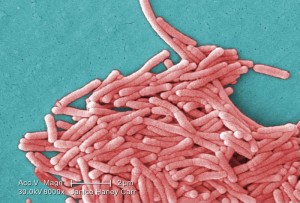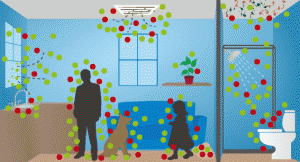This seems like an incredibly worthy cause: Source: FlintWaterStudy Research Fundraiser by Siddhartha Roy – GoFundMe In addition it is directly connected to the mission of microBEnet in that this is a fundraiser for the work of Marc Edwards, He is a professor at Virginia Tech and one of the heroes of the Flint Water …
There is a new open access paper of possible interest to those working on water systems, green buildings, and/or microbial ecology: Survey of green building water systems reveals elevated water age and water quality concerns – Environmental Science: Water Research & Technology (RSC Publishing) DOI:10.1039/C5EW00221D By William J. Rhoads, Amy Pruden and Marc A. Edwards in Environmental …
The Guardian is reporting that lead contamination may be a problem “in every major city east of the Mississippi,” and that, as in Flint, contamination may be deliberately covered up by local water utilities through a loosely organized program of test gaming. Lead isn’t very soluble in water. If you want your tests to come …
(Update: after posting this I found that actual experts have proposed a different hypothesis) So the recent Legionnaires’ Disease Outbreak in Flint, Michigan has been getting quite a bit of press recently. For example in the last few days here are pieces from The Atlantic, The Washington Post, and CNN. The very short version of …
Of possible interest: Dear Colleagues- Please forward this to lists within your institution and to individuals who may be interested: We seek an outstanding individual to contribute to a collaboration between Google, the Environmental Defense Fund and Colorado State University that is having direct impact on the amount of methane being emitted from cities. In …
MicroBEnet community, I’m now entering the 5th month of sampling for my MoBE postdoctoral fellowship [see https://microbe.net/2014/10/29/microbiomes-and-the-athletic-arena-indoor-track-facility-microbiome-in-conjunction-with-salivary-and-nostril-microbiomes-of-indooroutdoor-runners/] and want to begin compiling the pertinent physical building-centric metadata (not for the individual samples, that I have as ongoing) for my project. Below is the list that I currently have, but if the community feels that there are other …
Often on this blog, we talk about biofilms in water systems or water-borne pathogens. Even when we discuss the drinking water microbiome, it is seldom with a focus on any particularly beneficial bacteria. Although there has been some discussion about what essentially amounts to probiotics for water, there seems to be little literature in the area …
Source: Relative and contextual contribution of different sources to the composition and abundance of indoor air bacteria in residences | Microbiome | Full Text Another very useful paper from the Microbiome journal. This one from Marzia Miletto and Steven Lindow. Here is the Abstract: Abstract Background The study of the microbial communities in the built …
2013-5-19MBPF Source: Sources of airborne microorganisms in the built environment | Microbiome | Full Text Really nice new review paper by Aaron Prissin and Linsey Marr. It covers research on sources of airborne microbes including Humans Pets Plants Plumbing HVACs Water damage Dust Outdoor air Really thorough with tons of references and discussion of the …
Source: The microbiome of the built environment and mental health | Microbiome | Full Text Andrew J. Hoisington, Lisa A. Brenner, Kerry A. Kinney, Teodor T. Postolache and Christopher A. Lowry When I saw the title of this I cringed a bit, worried that this paper would be overselling what we know about the microbiome and …






